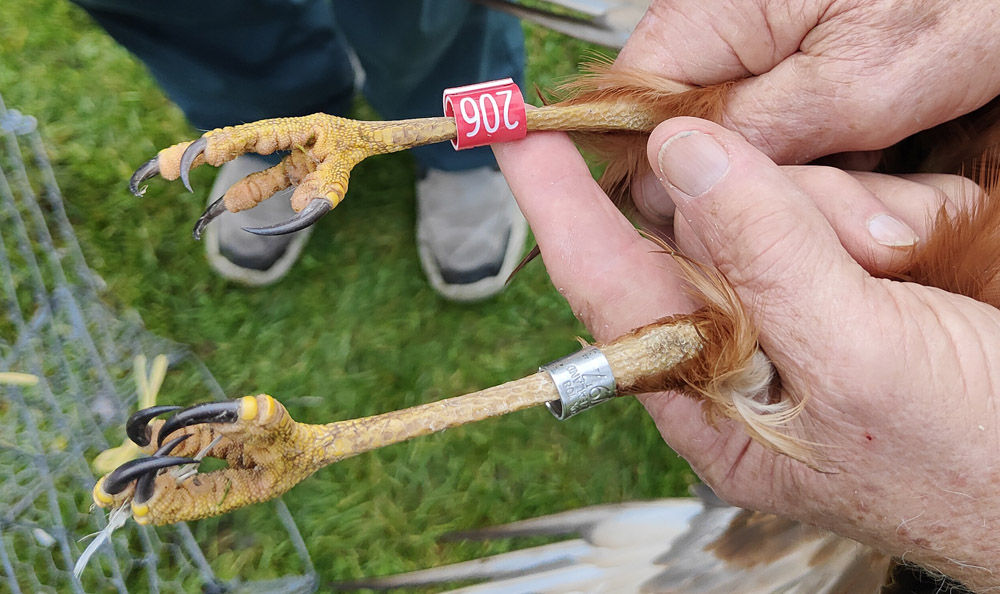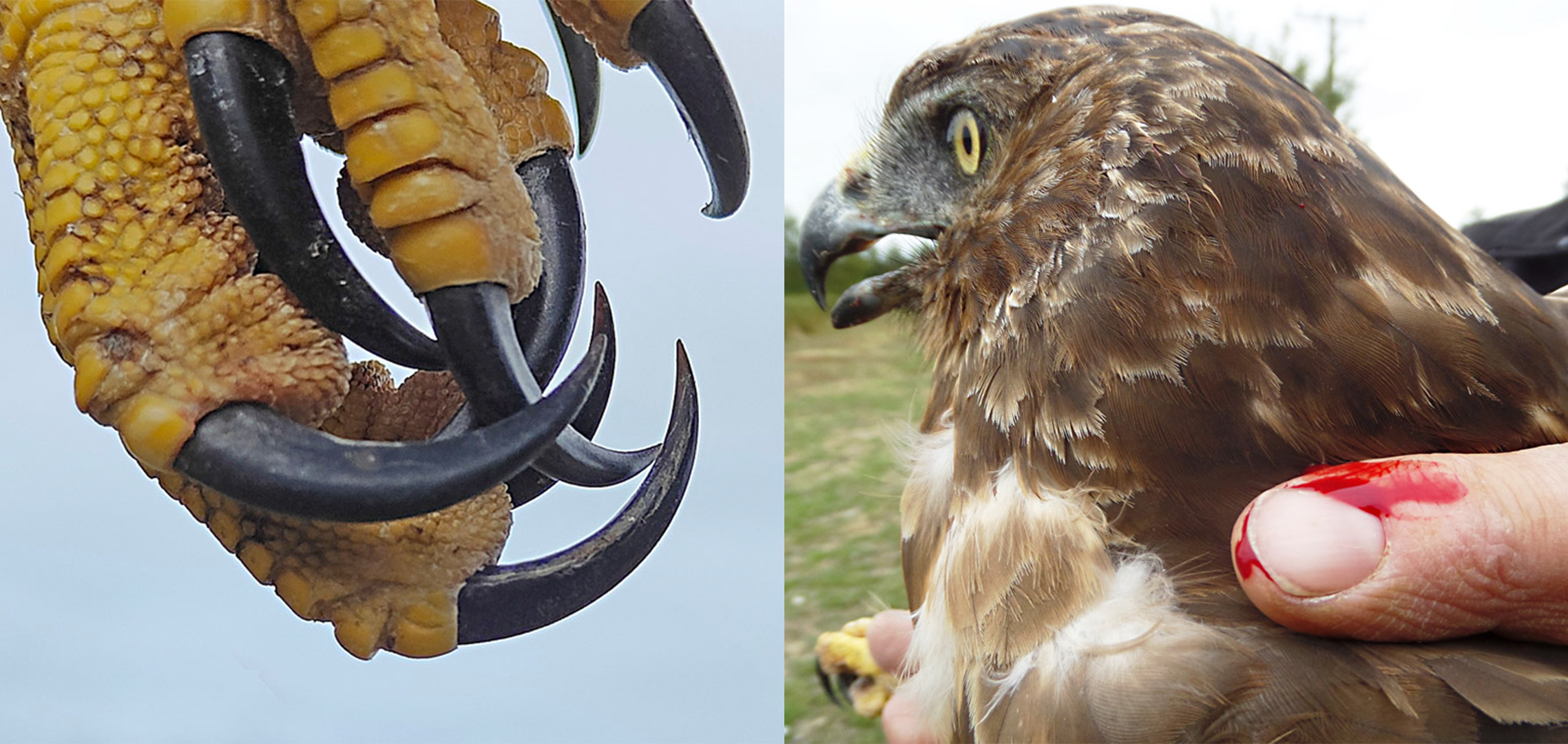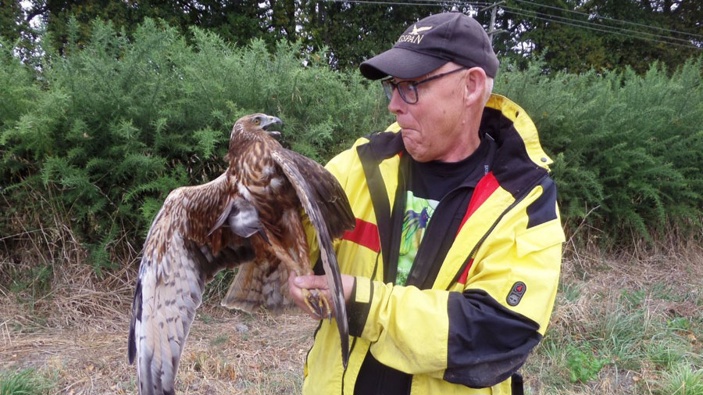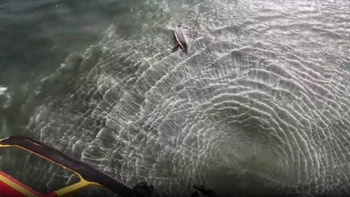Despite the nice week or two in Canterbury (noticed the Temperatures in the high twenties, this week?) there comes a time when we’ll be filling the Ultra-Low Emissions Burners again.
Some of our native birds will either be looking to get autumn food, while others will depart for better climates. Migration is a clever option.
There are a few ways in which we can keep an eye on our birds’ movements: the expensive trick is to catch birds and attach a transmitter to their body that bleeps every now and then and sends a signal to satellites indicating the longitude and latitude, time of day and speed of flight. Expensive technology, but pretty cool to work with.
Our team in Canterbury, led by Peter Reese, is doing it the simple way: catch the bird (in this case a Harrier), put a standard metal band around one leg and on the other leg a much larger, coloured tag with a (three-digit) number that can be seen from quite a distance through a pair of binoculars.

We re-capture some of the birds, often in the place where they were banded originally. But the clever trick is that anybody with binoculars might be able to contribute to the research.
That is a rather safe way of assisting with the project. You see, Harriers have very little sense of humour.
You can imagine that their strong, curved beak will be their ace attack system…
Maybe.
I found that they would love to smack you with their extremely sharp talons, a great scientific word for long, pointy nails.

So far we have only started a year or so ago; the hypothesis is that these harriers move north when the snow starts falling in the South Island – maybe they do exactly that!
But it would be nice if people could keep their eyes peeled and report tagged or banded harriers when they see one, or when they find one on the side of the road, bowled over by a car.
Either fill in an online reporting form, write, email, or ring the National Banding Office (DOC). They will need to know the following details:
• Band number
• When the bird was found the bird (date if possible)
• Where the bird was found
• If the bird is colour banded, the position of each colour band (note which leg it was on and the position
• The condition of the bird
Seeing it’ll be school holidays, it might be a good idea to get kids to observe Harriers (and other birds) and become real-life ornithologists.
Or maybe just Nature Nerds!
Take your Radio, Podcasts and Music with you










